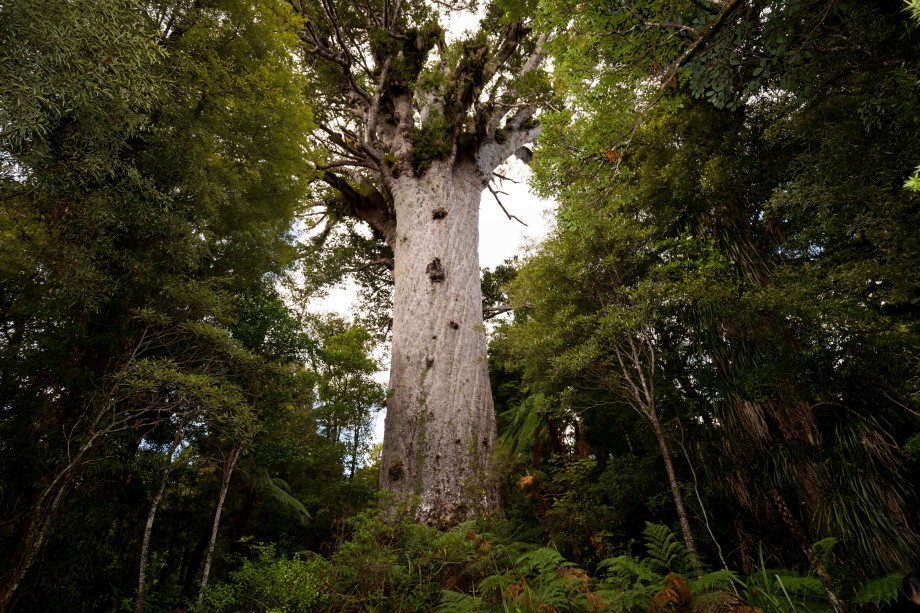Kauri - Te Ao Māori
According to Māori philosophy and understanding of the spiritual world, cosmos, nature and the natural world, all trees come from the spiritual world and over time are gifted by spiritual ancestors to the natural, material worlds and humanity.
Nā te kī a Manuka Henare.
Excerpt from the writings of the late Dr Mānuka Henare
(Te Rarawa, Te Aupōuri, Ngāti Kahu), who passed away 23 January 2021.
The Kauri tree is among the most ancient in our part of the Universe. Its antecedents appeared during the Jurassic period, between 190 and 135 million years ago. It is thus a taonga tuku iho of the ancestral spiritual world of the Supreme Being, Io Matua Kore, followed through aeons to Ranginui and Papatūānuku, Father Sky and Mother Earth, and their child Tāne. All Kauri and other trees attest to the wonder of evolution, the ability of life to adapt to unexpected challenges, and to perpetuate itself over vast periods of time. Rooted securely in the earth, Kauri, like other trees, reaches for the heavens.
Kauri, as do other trees, consists of the following attributes. A Kauri has a tinana, rendered as its body; it is imbued at its birth with its own tapu, meaning its potentiality to be a remarkable tree, and it is the tapu of Tāne that gives to the Kauri its primary mana, its authority and status as a rangatira of the forest. The Kauri is a child of Tāne, Rangi and Papa, and ultimately of Io Matua Kore. From its conception it receives its own mauri, or life-force, from Io Matua Kore who inspired its name, Kauri. In Māori metaphysics, the name is closely connected with the very being of things of creation. The action of Io Matua Kore by giving the name established its mana and tapu, and in so doing its identity. It is from this action the Kauri takes its unique āhua or form.

It is the mauri that defines the nature of the Kauri, thus determining its specific characteristics. The mauri also binds the tinana to its wairua which is the spiritual kaitiaki or guardian that guides and protects it throughout its long life. Each Kauri has its own hau, another life force of Io Matua Kore which guides its capability to be productive as a Kauri tree. It is this productivity that gives sustenance and life to associated flora and fauna. Furthermore, the production of its unique male and female cones is the resilience expected of such a tree. The death of the Kauri occurs when its mauri separates itself from the tinana, for various reasons, thus releasing the wairua of the tree to return to its spiritual source. In this ethical view of life and of the natural world, all trees such as Kauri come from the spiritual world and are gifted to the cosmos, the natural material world and humanity.
This combination of unique spiritual, genetic and biological attributes enables each Kauri to grow according to its nature to be a rākau rangatira, a canopy tree of significance. Over its full life of 500-2,000 years it becomes a kāinga, a habitat and home to a succession of creatures and other plant species. It thus protects and sustains specific birdlife such as Kākā, Kereru and other birds; its own family of insect life; and associated shrubs such as tree ferns, Nīkau palms, orchids, vines, and flowers. Finally, it continuously creates its own pā-kāinga around itself, nurturing Rimu, Tōtara, Miro, Pūriri, Taraire and Kohekohe. It is in its nature to live a very, very long life, and grow to immense proportions, both width and height. According to tradition throughout its life cycles each Kauri is protected by its own wairua, its spiritual guardian from Io Matua Kore, and kaitiaki tāngata, the human guardians.